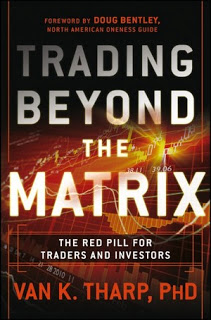According to Mark Douglas…
In any particular trade you never really know how far prices will travel from any given point. If you never really know where the market may stop, it is very easy to believe there are no limits to how much you can make on any given trade. From a psychological perspective this characteristic will allow you to indulge yourself in the illusion that each trade has the potential of fulfilling your wildest dream of financial independence. Based on the consistency of market participants and their potential to act as a force great enough to move prices in your direction, the possibility of having your dreams fulfilled may not even remotely exist. However, if you believe it does, then you will have the tendency to gather only the kind of market information that will confirm and reinforce your belief, all the while denying vital information that may be telling you the best opportunity may be in the opposite direction.
There are several psychological factors that go into being able to assess accurately the market’s potential for movement in any given direction. One of them is releasing yourself from the notion that each trade has the potential to fulfill all your dreams. At the very least this illusion will be a major obstacle keeping you from learning how to perceive market action from an objective perspective. Otherwise, if you continually filter market information in such a way as to confirm this belief, learning to be objective won’t be a concern because you probably won’t have any money left to trade with (italics mine).
From Chapter Four of THE DISCIPLINED TRADER


 Hi All,
Hi All,

 Sell and Sell Short (Wiley Trading) by Alexander Elder
Sell and Sell Short (Wiley Trading) by Alexander Elder
